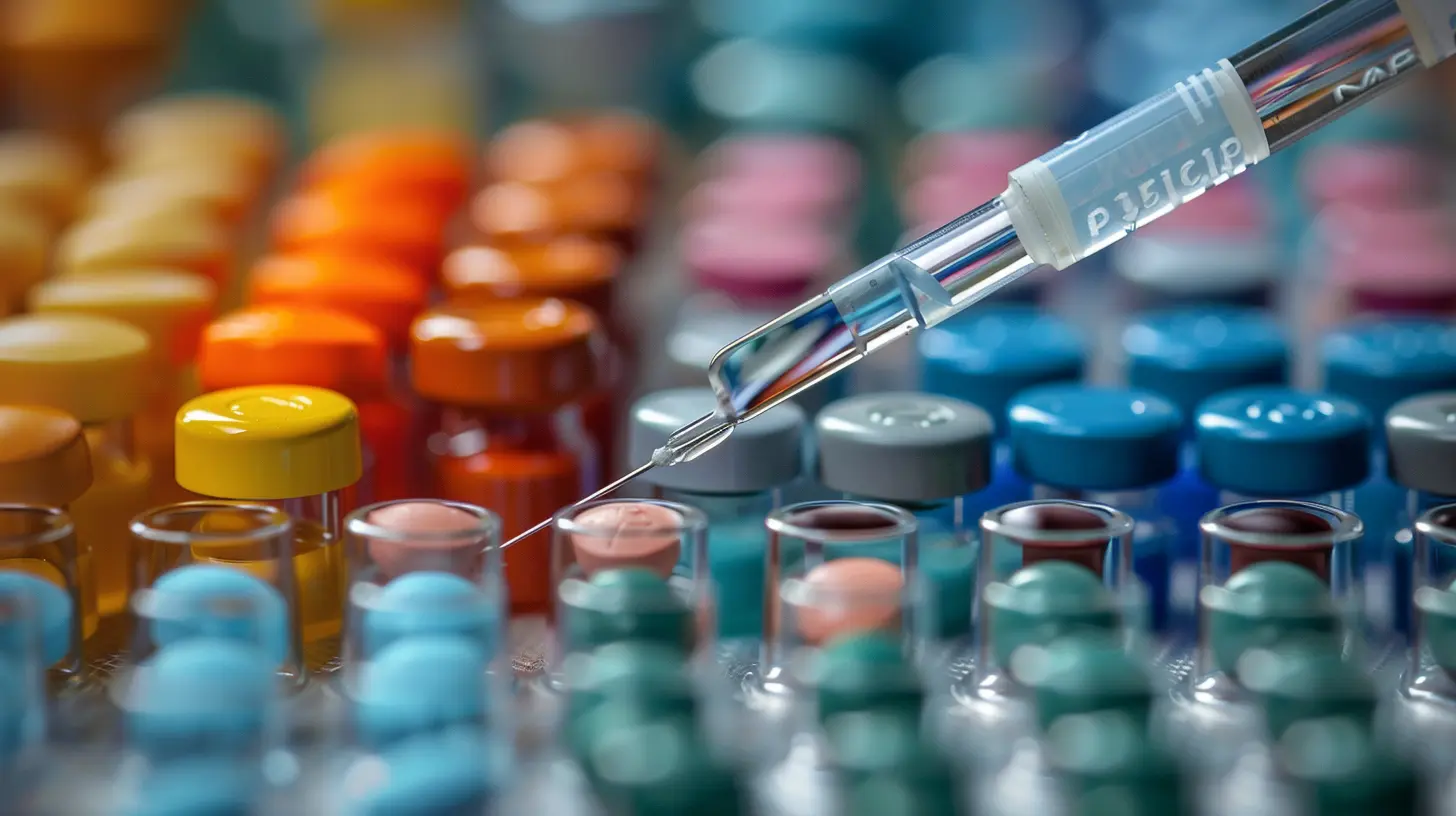26 February 2025
In the world of professional sports, athletes are expected to push their bodies to the limit, achieving feats that seem almost superhuman. However, with this pressure to perform at the highest level comes the temptation to take shortcuts. Doping—using banned substances or methods to enhance performance—has been one of the most significant challenges in sports for decades. But as doping methods evolve, so too does the technology used to detect it.
In this article, we'll dive into the role of technology in detecting doping, how far we've come, and where we might be headed. Whether you're a sports fan, a curious observer, or someone who’s just intrigued by the intersection of sports and technology, this article will give you some fascinating insights.

What is Doping?
Before we delve into technology's role, let’s quickly define what doping actually is. Doping refers to the use of prohibited substances or methods to artificially enhance athletic performance. Common examples include anabolic steroids, EPO (erythropoietin), and blood doping.While doping can give an athlete a temporary edge, it's not only unethical but also dangerous. It undermines fair competition and can lead to serious health risks, including heart problems, hormonal imbalances, and even death.
Why is Doping Such a Big Deal?
Imagine you're running a race, and everyone is supposed to start at the same line. But what if one of the runners gets a 10-second head start? That’s what doping does—it gives athletes an unfair advantage, skewing the playing field. Not only does it compromise the integrity of the sport, but it also devalues the hard work of athletes who compete clean.This is why detecting doping is critical. In fact, it’s essential to preserve the essence of fair play in sports. But here’s the kicker: the methods athletes use to dope are getting increasingly sophisticated. Thankfully, so are the ways we detect them.

The Evolution of Doping Detection
The fight against doping has gone through several phases. Early on, doping tests were rudimentary, focusing on basic substances like stimulants. Over time, as the substances athletes used became more advanced, so too did the detection methods.From Urine to Blood Tests
The earliest methods of detecting doping relied heavily on urine samples. Simple, right? You'd think that catching someone doping should be as easy as testing their pee. But athletes and their teams soon found ways to mask or dilute substances in their urine, making it harder for authorities to detect banned substances.So, what’s next? Enter blood tests. Blood tests are far more reliable and can detect a wider range of substances. They measure everything from hormone levels to blood cell counts. The more advanced the tests, the harder it became for athletes to hide their doping.
The Biological Passport: A Game Changer
One of the most significant advancements in doping detection technology is the Athlete Biological Passport (ABP). Introduced in 2008, this groundbreaking tool doesn’t look for drugs directly. Instead, it monitors an athlete's biological markers over time. Think of it like a health diary that tracks changes in your body.So, why is the ABP so effective? Well, if an athlete suddenly shows an unusual spike in red blood cells or hormone levels, it raises a red flag—even if they’re not testing positive for a specific substance. This makes it much harder for athletes to use substances like EPO or engage in blood doping without being caught.
In a way, it’s like keeping track of your car’s mileage. If your car suddenly shows a huge mileage jump after a short trip, you’d know something’s up, right? The ABP works in a similar fashion, looking for suspicious changes in an athlete’s biological data.

Current Technologies for Detecting Doping
So, how exactly does modern technology help detect doping today? The tools available now are far more advanced than what we had just a decade ago. Here’s a closer look at some of the cutting-edge methods used to keep sports clean.1. Mass Spectrometry
Mass spectrometry is used to identify and quantify compounds in a sample—whether it’s blood, urine, or even hair. In doping detection, it’s like having a magnifying glass that can pick out even the smallest traces of a banned substance.This technology can detect not only the presence of a substance but also its exact chemical structure. Athletes who think they can outsmart the system by using new or modified drugs quickly find out that mass spectrometry is a force to be reckoned with.
2. Isotope Ratio Mass Spectrometry (IRMS)
Regular mass spectrometry is cool, but Isotope Ratio Mass Spectrometry (IRMS) takes things up a notch. This method can even differentiate between naturally produced substances in the body and synthetic ones. For example, testosterone is something your body naturally produces, but when athletes inject synthetic testosterone, IRMS can tell the difference.It’s like being able to tell the difference between sugar and artificial sweetener. Sure, they might look the same in your coffee, but under scrutiny, it's clear they’re different. IRMS provides that level of scrutiny.
3. Gene Doping Detection
Ah, gene doping—the next frontier. Unlike traditional doping, where athletes use drugs or blood transfusions, gene doping aims to alter an athlete’s genetic material to enhance performance. It’s like editing the settings on a video game character, but in real life!Detecting gene doping is still in its early stages, but scientists are already working on methods to identify unnatural changes in an athlete's DNA. One method being researched is genomic sequencing, which could one day be used to detect even the smallest genetic tweaks.
4. Artificial Intelligence (AI) in Doping Detection
You didn’t think AI would be left out of the discussion, did you? Artificial Intelligence is increasingly playing a role in doping detection. By analyzing large datasets—such as results from the Athlete Biological Passport—AI algorithms can spot patterns that a human might miss.For instance, AI can help predict when an athlete is likely to dope by looking for subtle changes in their data over time. It’s like having a detective who never sleeps and can sift through mountains of information in seconds.

The Future of Doping Detection
The cat-and-mouse game between dopers and anti-doping authorities is far from over. As athletes and their teams find new ways to cheat the system, technology must continue to evolve.Nanotechnology: The Next Big Thing?
One exciting area of research is nanotechnology. Imagine a tiny sensor that could be implanted in an athlete’s body, continuously monitoring for banned substances. These nanosensors could offer real-time data, making it nearly impossible for athletes to use performance-enhancing drugs without being caught.Sounds like sci-fi, right? But scientists are already making strides in this area, and it could very well be the future of doping detection.
Machine Learning and Big Data
As doping detection technologies produce more data than ever before, the need for advanced analytics will grow. Machine learning could allow anti-doping agencies to analyze complex patterns in an athlete's biological data, making it easier to predict and catch potential doping activities.Big Data will also help authorities track trends across different sports, regions, and timeframes. This could lead to more targeted testing and more efficient use of resources.
Challenges and Controversies
Of course, no system is perfect. As technology advances, so do the potential challenges. One concern is privacy. How much data should athletes be required to share in the name of fair play? With tools like the Athlete Biological Passport and gene doping detection on the horizon, some athletes are concerned about the invasion of their personal health data.Another issue is the cost. Advanced technologies like mass spectrometry and genomic sequencing are expensive. Smaller sports organizations may struggle to implement these technologies, creating a disparity between wealthier sports leagues and those with fewer resources.
Lastly, there’s always the risk of false positives. While technology has come a long way, it’s not foolproof. A false positive could ruin an athlete's career, and anti-doping agencies need to ensure their methods are as accurate as possible.
Conclusion: A Technological Arms Race
Ultimately, the role of technology in detecting doping is about maintaining fairness in sports. It’s a constant battle between those who seek to cheat and those who strive to keep competitions clean. As technology continues to advance, athletes who dope will find it harder and harder to get away with it.But here’s the thing: no matter how advanced the technology gets, the real key to eradicating doping is a cultural shift. Athletes, teams, and fans need to embrace the idea that performance achieved through hard work, dedication, and natural ability is far more rewarding than anything gained through cheating.
So, the next time you watch your favorite athlete break a world record or score that game-winning goal, you can rest a little easier knowing that technology is working behind the scenes to keep the competition clean.











Sorin McCune
Technology enhances integrity in sports, but raises ethical concerns.
April 8, 2025 at 10:34 AM